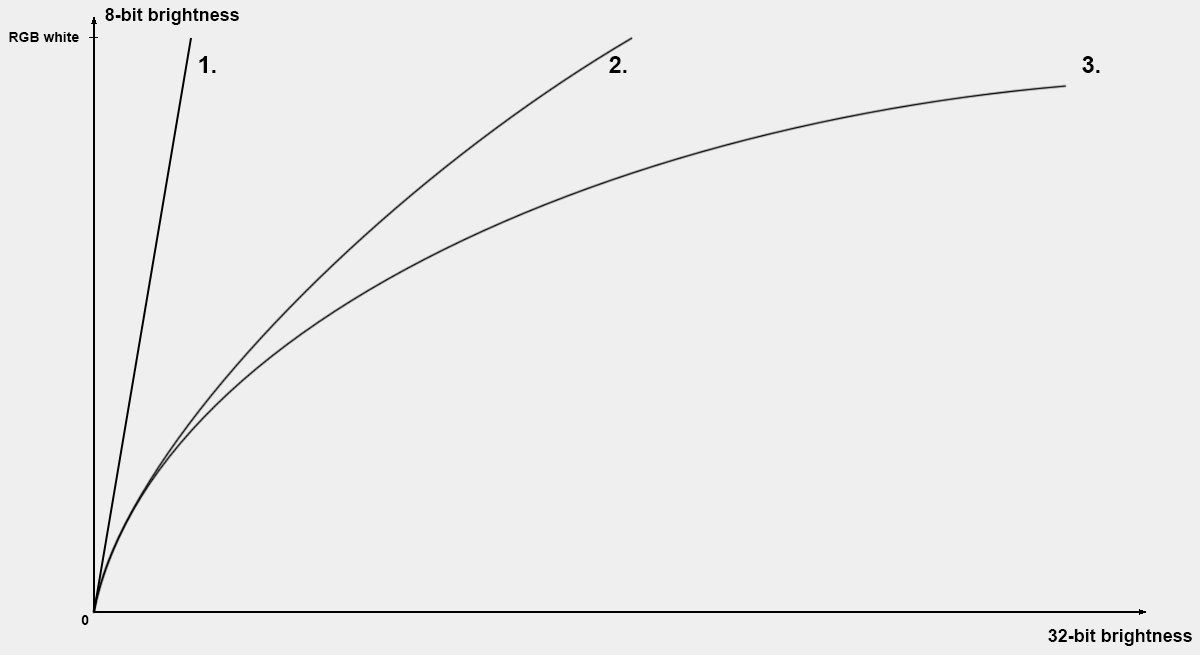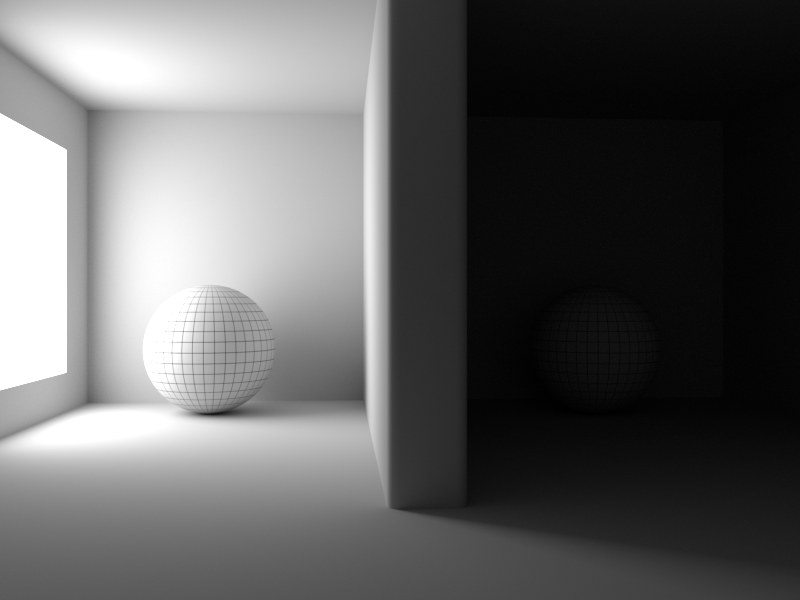Basic Properties
The linear modes brighten or darken all regions of the image uniformly. This means that some image regions can be drowned out.
This is a simple mode that simply multiplies all color values with the Scale factor. Both dark and bright regions will be brightened or darkened.
Exposure [0..+∞]
ISO [0..+∞]
F-Stop [0..+∞]
Gamma [0..+∞]
If you have knowledge of photography, these settings should be familiar to you. These common camera settings Exposure (the larger the value, the brighter), ISO (the larger the value, the brighter (this setting represents is the film/sensor sensitivity)), and F-Stop (the larger the value the darker) can be used to adjust the results.
The Gamma value can be used to increase (larger values) or decrease (smaller values) the image’s mid-range brightness (which is actually not linear behavior if the value is not equal to 1).
This operator can be compared to a camera’s automatic exposure: an average brightness value for the image is ascertained internally on which a correct value for Exposure and F-Stop will be defined, based on Photo Linear formulas. Subsequently, a gamma correction can be made using the Gamma setting.
This option ascertains the brightest point and sets it to white. The remainder of the image will be "scaled" relative to this point. If there are very bright regions in the image, darker regions will be made much darker or even black.
Pre-Scale [0..+∞]
Post-Scale [0..+∞]
Burn [0..+∞]
 Three Rheinhard curves with different Burn values from 1 to 3.
Three Rheinhard curves with different Burn values from 1 to 3.The Rheinhard operator is based on tone mapping techniques used in photography. As you can see in the image above, bright regions are compressed in particular. This tone mapping method is the most prevalently used method for rendering.
Pre-Scale primarily affects darker regions (higher values can be used to brighten shaded regions) and the Post-Scale is used to adjust brighter regions, as can be seen in the image above, and even blends between linear and exponential curve progression.
The following scene is and example, rendered without Tone Mapping:
 The luminous material at the left has a brightness of 250%, a sphere lies at the right in the dark.
The luminous material at the left has a brightness of 250%, a sphere lies at the right in the dark.As you can see, there are over-exposed and very dark regions. The image doesn’t look good. In the following you can see how some of the operators work:

Photo Linear is not used here because it behaves similarly to the other linear operators.
As you can see in the image above, Auto Linear works best (in combination with Gamma): Very bright regions are darkened and dark regions are brightened. Rheinhard doesn’t work very well with this scene: very dark regions cannot be brightened adequately. This operator works best for scenes with even lighting and no very dark regions (e.g., interior room renderings).
The linear operators don’t work well with the example scene because they either darken bright regions, which makes dark regions even darker or they brighten dark regions, which over-exposes brighter regions.